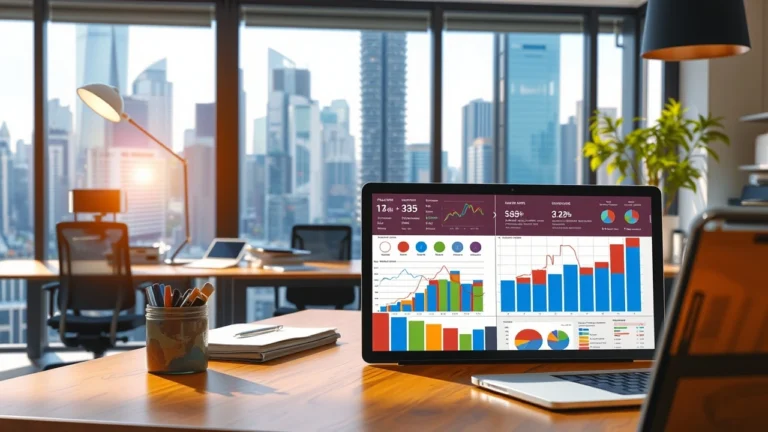How AI Improves Crypto Trading Strategies
Artificial Intelligence (AI) has revolutionized cryptocurrency trading. It is transforming the decision-making process in this volatile, fast-paced market. AI’s ability to analyze and predict market trends and identify patterns is a key factor in enabling traders to make better decisions. By leveraging advanced computational capabilities, AI minimizes risks, maximizes profits, and offers tools to automate trades, reducing human error and emotional biases.
Machine learning algorithms adapt to market changes, while sentiment analysis of news and social media provides valuable insights into market sentiment. AI-powered risk management systems assess potential losses and suggest strategies to mitigate them. This technology democratizes access to advanced trading strategies, benefiting individual and institutional traders alike. As AI continues to evolve, its role in shaping the future of cryptocurrency trading grows increasingly significant, offering traders a competitive edge in an ever-changing market.
Understanding Market Trends

The ability of AI to analyze market trends is one of the main advantages of using it in cryptocurrency trading. Artificial intelligence (AI) algorithms can identify patterns that humans might overlook by continuously observing a variety of data sources, including news articles, social media posts, and price movements. This enables traders to use data-driven insights instead of just intuition to make better decisions.
AI is able to analyze large amounts of data in order to identify trends in the market. The cryptocurrency markets are affected by many factors including global economics news, technological advances, and social media sentiment. AI algorithms are excellent at analyzing this multidimensional data and uncovering patterns that would otherwise be missed by human traders.
AI tools, for example, can analyze in real-time thousands of posts on social media, articles from the news, and other sources to gauge market sentiment. This allows traders to anticipate price changes based on public opinion and breaking news. These insights allow traders to make informed decisions based on data, rather than solely relying on intuition or incomplete info.
Making Real-Time Decisions
AI is capable of analyzing large amounts of data in real-time, which is crucial in the fast-paced world of crypto trading. With its high processing power, AI can quickly process and analyze market data to identify potential opportunities or risks. This enables traders to make split-second decisions and execute trades at optimal times.
Timing is key in the cryptocurrency market. Prices can rise or fall in seconds. The ability to act quickly can make the difference between significant gains and losses. AI’s ability to process and analyze data in real time gives traders an edge.
AI-powered systems are able to monitor the global markets in milliseconds and identify trading opportunities. If an AI algorithm detects that trading volume of a cryptocurrency has suddenly increased, it could alert traders or execute trades automatically. The speed and precision of the AI algorithm allows traders to take advantage of opportunities that are otherwise impossible to exploit manually.
Managing Risk
Risk management is a crucial aspect of successful trading, and AI can greatly improve this process. By constantly monitoring market trends and patterns, AI algorithms can alert traders to potential risks and help them adjust their strategies accordingly. Additionally, with its ability to analyze historical data, AI can also help identify potential market crashes or bubbles, allowing traders to adjust their portfolios accordingly.
Successful cryptocurrency trading requires effective risk management. This market is inherently volatile, and therefore risky. AI can offer robust solutions to reduce these risks. AI can provide traders with recommendations based on historical data and market conditions.
AI-powered tools are also able to simulate possible scenarios based on current market trends. This helps traders better understand the risks and rewards associated with their decisions. If a trader was considering a high risk investment, the AI system could highlight possible pitfalls or suggest other strategies that have a better risk-to reward ratio. This proactive approach to managing risk helps traders protect their investments from major losses.
Automating Trading Processes

Another way AI improves crypto trading strategies is through automation. With the use of AI-powered trading bots, traders can automate various processes such as data analysis and trade execution. This not only saves time but also minimizes human error and emotions in decision-making. However, it’s important for traders to continuously monitor and assess the performance of these bots to ensure they are aligned with their trading goals.
AI has a transformative effect on crypto trading. AI-driven trading robots allow traders to automate repetitive tasks, such as market analyses, order execution and portfolio rebalancing. Not only does this save time, but it also reduces human error and emotional decisions.
AI trading bots are based on either pre-set parameters, or adaptive machine learning algorithms. They can execute trades efficiently and consistently by executing them at the optimal time. A bot programmed to use a scalping technique might make dozens of trades per day in order to take advantage of minor price changes. AI bots allow traders to remain vigilant and responsive to market changes by removing the limitations of humans.
Personalization and Adaptability

One of the most exciting aspects of using AI in crypto trading is its ability to personalize strategies based on individual preferences and adapt to changing market conditions. Through machine learning algorithms, AI can learn from past trading decisions and continuously improve its strategies. This allows traders to constantly evolve their approach and stay ahead of the market.
AI’s ability to adapt to changing market conditions and tailor strategies for individual traders is another compelling feature. Machine learning models analyze historical data, preferences and risk tolerance of traders to create personalized strategies aligned with their goals.
AI systems can also learn and improve with time. These systems improve their ability to predict market movements and optimize trading strategies as they collect more data. A system using AI might, for example, identify that traders tend to do better with long-term investment than short-term trading. It can then modify its recommendations in order to highlight strategies that are aligned with this strength.
Overcoming Emotional Biases
Human traders can be influenced by emotions like fear and greed. This can lead to impulsive actions and suboptimal results. AI operates solely on logic and data, removing emotional biases.
By using AI to make decisions, traders can keep their strategies disciplined. An AI system, for example, might advise traders to hold onto assets during a downturn based on projections over the long term, while a human might panic and sell too early. This objective view helps traders remain focused on their goals, and make rational choices even when under high stress.
Challenges and considerations
AI is not without challenges. To implement AI tools efficiently, you need to have a thorough understanding of the technology as well as the cryptocurrency market. To ensure that AI systems are aligned with the traders’ objectives, they must spend time and resources setting up and tuning AI systems.
The quality of data that AI models analyze is also important. Data that is inaccurate or incomplete can lead to poor predictions and outcomes. Traders need to be aware of the integrity and source of data that they use.
AI is not a replacement for human judgement. It can improve decision-making but it cannot replace it. AI should be viewed as a tool that complements traders’ abilities, rather than replacing them. The most effective approach is a balanced one that blends human intuition and AI-driven insights.
Future of AI in Crypto Trading
AI’s potential for cryptocurrency trading is likely to grow as AI technology evolves. AI capabilities will be further enhanced by innovations such as advanced predictive analytics and natural language processing.
NLP algorithms, for example, could allow AI systems to interpret nuanced signals in unstructured sources of data, such as announcements by regulators or statements made by influential individuals. This would give traders a deeper understanding of the market dynamics.
AI systems could also become more integrated with DeFi platforms as blockchain technology evolves. This would allow for seamless and efficient trading of a variety of assets. This could create new opportunities for investors and traders alike.
The conclusion of the article is:
In conclusion, the use of AI in crypto trading can greatly improve strategies by providing data-driven insights, making real-time decisions, managing risk, automating processes, and adapting to changing market conditions. However, it’s important for traders to understand that AI is not a replacement for human decision-making but rather a powerful tool that can enhance it. With the rapid advancements in AI technology, we can expect to see even more innovative solutions for improving crypto trading strategies in the future. So it’s crucial for traders to stay informed and continuously adapt their strategies, utilizing the power of AI to stay ahead in this ever-changing market. So, whether you’re a seasoned trader or just starting out, embracing AI can give you a competitive edge and help you achieve success in the world of crypto trading.
Artificial intelligence (AI) is changing the face of cryptocurrency trading. It gives traders powerful tools for navigating this volatile and complex market. AI offers a variety of benefits, from analyzing market trends and automating processes to managing risks and enhancing decision-making.
To be successful in using AI, you need to take a careful approach. Traders need to invest in high-quality tools, prioritise data integrity and maintain a balance of automation and human oversight. They can then harness the full power of AI in order to achieve their trading objectives.
AI will continue to play a role in the crypto market as it continues to evolve. Traders that embrace and adapt this technology will thrive in a competitive environment. AI can be a valuable advantage for investors, whether they are experienced or new in crypto trading. It will help them stay on top of the game and open up new opportunities.






